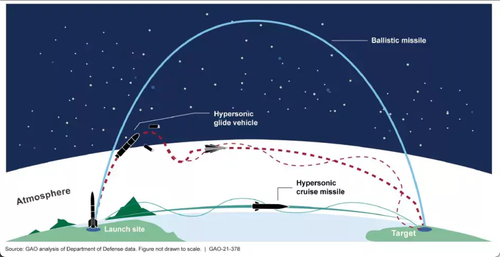US Falls Behind In Hypersonic Weapons Race After Another Failed Test
America is lagging behind its international competitors in the hypersonic weapons race. This week’s test provided more insight into just how badly the U.S. is behind.
Bloomberg was the first to report the Common Hypersonic Glide Body atop a two-stage missile booster that failed after an “anomaly” occurred during launch at the Missile Range Facility in Hawaii.
The booster failed to ignite, which would’ve accelerated the rocket in excess of Mach 5, at which the glide body separates and uses speed and an unpredictable path to strike targets without being detected by the most advanced defense shields in the world.
“While the Department was unable to collect data on the entirety of the planned flight profile, the information gathered from this event will provide vital insights,” said Pentagon spokesman Lt. Cdr. Tim Gorman in a statement. He didn’t provide additional details about the failed test.
Gorman said officials would use data from the rocket’s failures to correct the issue for future tests.
Even though the hypersonic weapons program has experienced multiple “fight test anomalies” over the last year, the spokesman was confident the delivery of the weapons to modern battlefields would occur “on target dates beginning in the early 2020s.”
The previous test of the glide body ended early when the booster rocket failed, which prevented the missile from leaving the launch pad. The Navy and Army have jointly been working on developing hypersonic weapons.
The Air Force has also been working on a hypersonic weapon. After several failed tests earlier this year, the service successfully tested a hypersonic missile off Southern California in May.
It’s no secret the U.S. is falling behind the hypersonic weapons race as the largest military in the world, in terms of size and defense budget, has yet to field hypersonic weapons.
Meanwhile, Russia (see: here) and China (see: here) have completed successful tests and or fielded super fast weapons on the modern battlefield.
The Biden administration recently revealed a new trilateral security pact between Australia – United Kingdom – United States (AUKUS) partnership, a move to “accelerate the development of advanced hypersonic and counter-hypersonic capabilities.”
The takeaway is the U.S. is lagging behind the competition in fielding hypersonic weapons as threats of spillovers from the conflict in Ukraine are undoubtedly rising.
Tyler Durden
Fri, 07/01/2022 – 22:45


Recent Comments